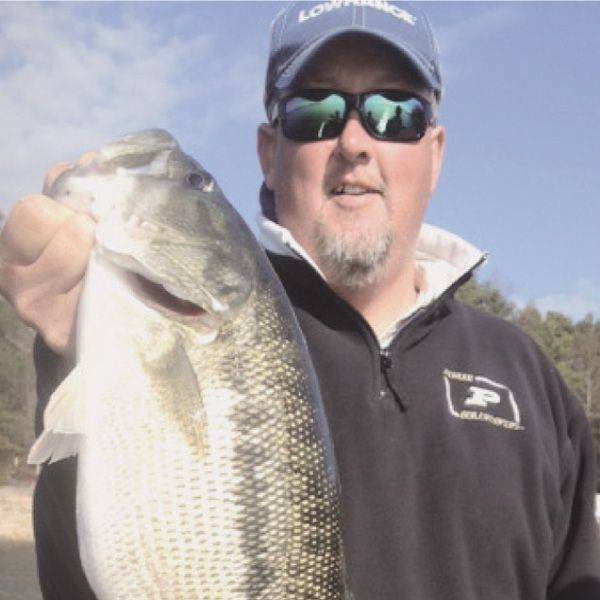by Blue Ridge Fly Fishing
Fall is finally here. Lake turnover is just around the corner accompanied by cooler and brighter weather and changing leaves. The transition from August to September was tough on the tailwater. We experienced higher temperatures than we have seen all summer. Remember, all the mid-summer rain actually extended our season and prevented a “heat lull” from starting back in July. Furthermore, irregular generation schedules offering less cool water during the warmest time of day has likely put stress on the fish.
The fishing finally picked back up about two weeks ago when I noticed a decent caddis hatch floating between Curtis Switch and Hothouse Creek. Fish are starting to be more surface oriented now that more bugs are hatching. Bank clusters of midges have been spotted by all of our guides on floats, and the fish seem to readily take smaller dries and emergers. The short period of warmer weather provided a nice window to stalk larger fish. I believe the larger fish that didn’t have easy access to deeper water became lethargic enough to sneak up on and get a fly close. Although fish numbers aren’t high, seasonal transitional periods are a great time to become educated as to how fish respond.
Dam to Tammen Park: There are still some fish between Tammen and the dam. Although pressured and shy from the summer crowds, these fish are still catchable. Focus on small pockets coming down from the dam where the tree line begins on the banks. Quarter the river in casts working from the close bank to the far bank. Once you find fish, take your time.
Use small dries on cloudy and overcast days, size 18 to 20 Parachute BWOs and size 18-20 Adams. Dry-drop with un-weighted nymphs, size 18 to 20 Split-Case BWOs and size 18 to 20 Pheasant Tails. Also, midges are an important food source for the trout living at the dam. Try size 20 Beefus Midges, size 18 to 22 Griffith’s Gnats, size 18 to 20 Bi-visibles and size 18 to 20 Lockaby’s Rocky Mtn. Redheads. Nymphs include size 18 to 20 Zebra Midges (black, red, or purple), size 20 Poison Tungs and size 20 Craven’s JuJuBaetis.
Curtis Switch/Horseshoe parks: The fishing at Curtis has been hit or miss lately. Most of our customers have brought in mixed reports, and I concur with most of them. Keeping it simple is the way to go. Start by fishing dry-dropper rigs in shallow water. Then work your way into the riffles with go-to dries for pocket water. If all else fails, go to a deep nymph rig under an indicator. However, I am confident fish will eat small dries all day at Curtis if you can find them.
Dries: size 16 to 20 tan Elk Hair Caddis, size 20 Parachute BWO, size 18 to 20 Parachute Pheasant Tail and size 18 to 20 CDC and Elk. Soft hackles in slick water have been productive on slow days.
Nymphs: Keep it simple and small, size 18 to 20 Zebra Midge, size 18 to 20 Beadless Pheasant Tail and Hare’s Ear, size 16 to 18 Fox Squirrel.
As the cooler weather approaches, anticipate small grey and black caddis. Caddis larvae nymphs should work on the bottom. Try size 18 Chase’s Tomahawk Caddis, size 16 to 18 Rock Worms, size 16 to 18 Z-Wing Caddis or size 16 to 20 Barr’s Graphic Caddis.
As mentioned earlier, lake turnover is close, so the river will start to stain noticeably. Keep a fresh assortment of junk-food such as size 16 pink San Juans, size 16 to 18 Y2Ks, size 14 to 18 Clown Eggs and size 10 to 14 bead-head Wooly Buggers in olive, black, and brown.
All of these patterns are available at our shop in Blue Ridge, so stop by and chat with Derek and Kory. We’ll get you headed in the right direction.
Provided by: Blue Ridge Fly Fishing
www.blueridgeflyfishing.com
706-258-4080

